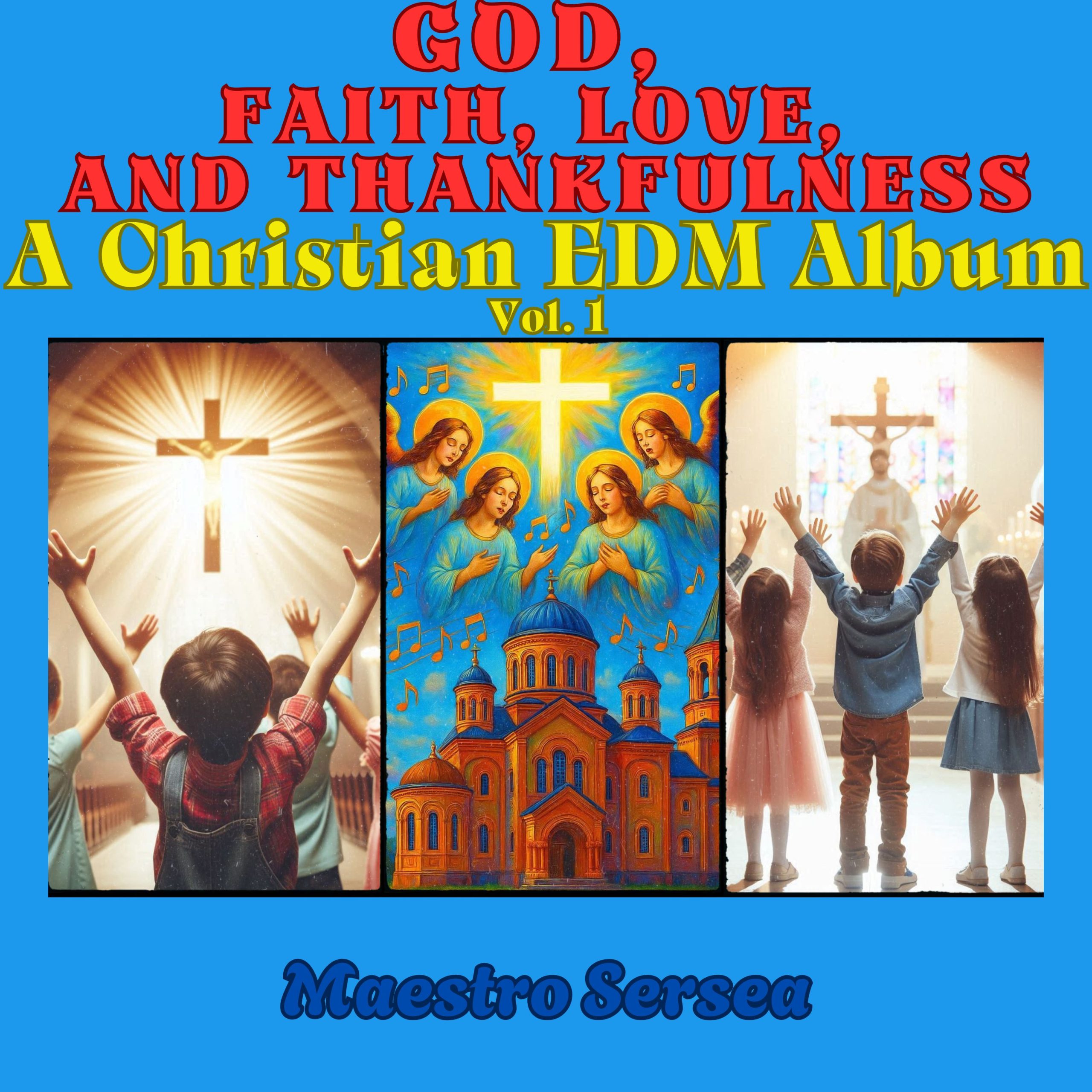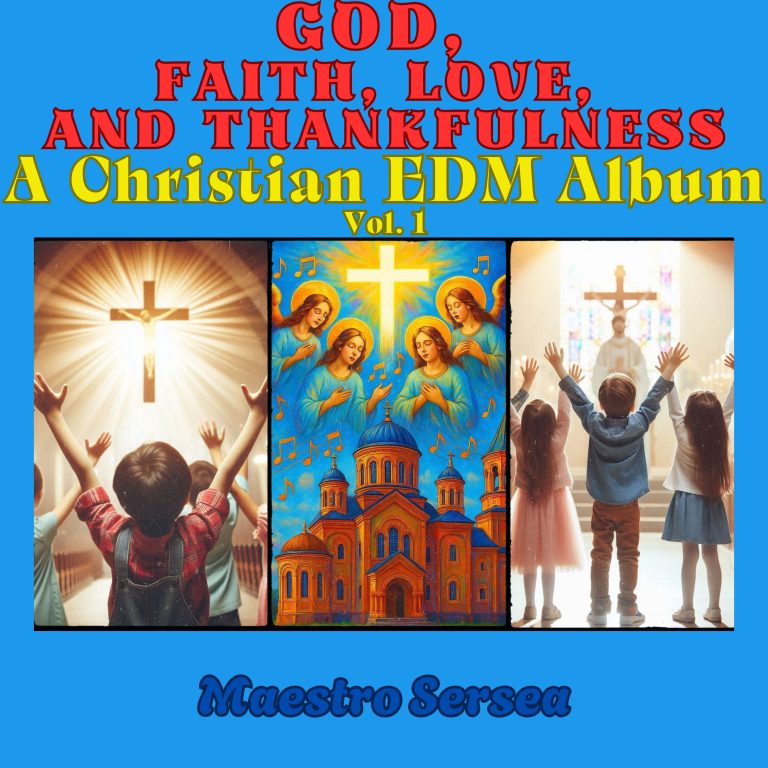
God, Faith, Love, and Thankfulness Album Cover
Lost and Found 1
[Verse]
Lost in the dark
No way to go
(Oh-oh, oh-oh)
Chasing the crowd
Just for the show
(Oh-oh, oh-oh)
Empty faces
Hollow eyes
Fear and anger
Burning skies
[Prechorus]
Running fast
But standing still
No escape
Against my will
[Chorus]
I was lost
Lost
Lost in the night
I was lost
Lost
No end in sight
But I see
See
See the light
Now I’m found
Found
Found inside
[Verse 2]
Echoes screaming
I can’t breathe
(Oh-oh, oh-oh)
Shadows pulling
Won’t let me leave
(Oh-oh, oh-oh)
Every heartbeat
Thunder loud
Drowning silence
In the crowd
[Prechorus]
Falling deep
The edge is near
But the light
It cuts the fear
[Chorus]
I was lost
Lost
Lost in the night
I was lost
Lost
No end in sight
But I see
See
See the light
Now I’m found
Found
Found inside
“Lost and Found 1” – Conservative Christian Analysis
Summary
“Lost and Found 1” depicts spiritual bondage’s desperation—being trapped in darkness, following crowds mindlessly, experiencing internal chaos despite external motion. The song portrays authentic conversion as divine rescue from this existential lostness. It contrasts hollow emptiness of life without Christ against the discovery of genuine identity and purpose through finding Him—showing Christianity as ultimate redemption narrative.
Biblical Foundation
Spiritual Lostness – “Lost in the dark, no way to go, chasing the crowd just for the show” reflects Matthew 6:23 (if light in you is darkness, how great that darkness) and Proverbs 14:12 (way seeming right but leading to death). Spiritual lostness produces aimlessness despite constant activity.
Hollow Existence – “Empty faces, hollow eyes, fear and anger, burning skies” portrays life without God as spiritually dead despite physical existence. Ecclesiastes 2:11 teaches vanity characterizes all pursuits disconnected from God.
Futile Motion – “Running fast but standing still, no escape against my will” reflects Romans 7:15-19 (doing what doesn’t want to do, unable to do what wants). Without Christ, people experience spiritual paralysis despite frantic activity.
Divine Breakthrough – “But I see the light, now I’m found” embodies John 8:12 (following Jesus means never walking in darkness) and Luke 15:32 (found, alive). Spiritual discovery happens through divine intervention, not human effort.
Fear’s Dissolution – “The edge is near, but the light cuts the fear” reflects 1 John 4:18 (perfect love casts out fear) and 2 Timothy 1:7 (God gives spirit of power, love, sound mind). Christ’s light penetrates fear’s deepest grip.
Identity Discovery – “Now I’m found, found inside” suggests finding oneself through finding Christ. Galatians 2:20 teaches believers no longer live but Christ lives in them—ultimate identity shift.
American Christian Context
Crowd Conformity – “Chasing the crowd just for the show” addresses American identity crisis where people adopt cultural trends, political positions, or lifestyle choices based on peer pressure rather than conviction. Believers must resist conformity (Romans 12:2), maintaining distinct biblical values.
Performative Culture – “Empty faces, hollow eyes” speaks to social media’s performance culture where people project curated images hiding internal emptiness. Authentic Christianity offers genuine transformation replacing performative facades with real identity in Christ.
Anxiety Epidemic – “Every heartbeat thunder loud, drowning silence in the crowd” depicts anxiety and overstimulation plaguing modern Americans. Constant connectivity, information overload, and social pressure create internal chaos. Christ offers peace transcending circumstances.
Existential Despair – “No end in sight” reflects contemporary despair, particularly among young Americans experiencing depression, hopelessness, and suicidality. Only Christ provides ultimate meaning and hope preventing existential collapse.
Escape Impossibility – “Shadows pulling, won’t let me leave” portrays addiction’s, depression’s, or sin’s grip—feeling trapped despite wanting freedom. Conservative Christianity proclaims Christ’s liberating power breaking even deepest bondage.
Crowd Pressure – “In the crowd” suggests believers succumbing to cultural pressure abandoning biblical convictions. Standing firm requires recognizing crowd mentality’s emptiness and finding identity in Christ rather than peer approval.
Light Discovery – “The light cuts the fear” emphasizes Christ as ultimate reality cutting through cultural deception and personal confusion. In relativistic culture rejecting objective truth, biblical Christianity offers stable Light transcending subjectivity.
Interior Transformation – “Found inside” suggests salvation transforms internal reality—not merely external behavior modification but deep identity restructuring. This addresses American Christianity’s weakness: emphasizing behavior without addressing heart transformation.
Assessment
Theologically excellent portrayal of spiritual lostness and conversion’s transformative power. Honestly depicts desperation, emptiness, and chaos characterizing life without Christ while proclaiming radical discovery through divine intervention. Particularly relevant for American youth experiencing existential despair, anxiety, and identity confusion. Shows Christianity not as rule system but as ultimate liberation and identity discovery. Effective evangelistic tool demonstrating gospel’s power to rescue from deepest bondage. Doctrinally sound and emotionally authentic.
